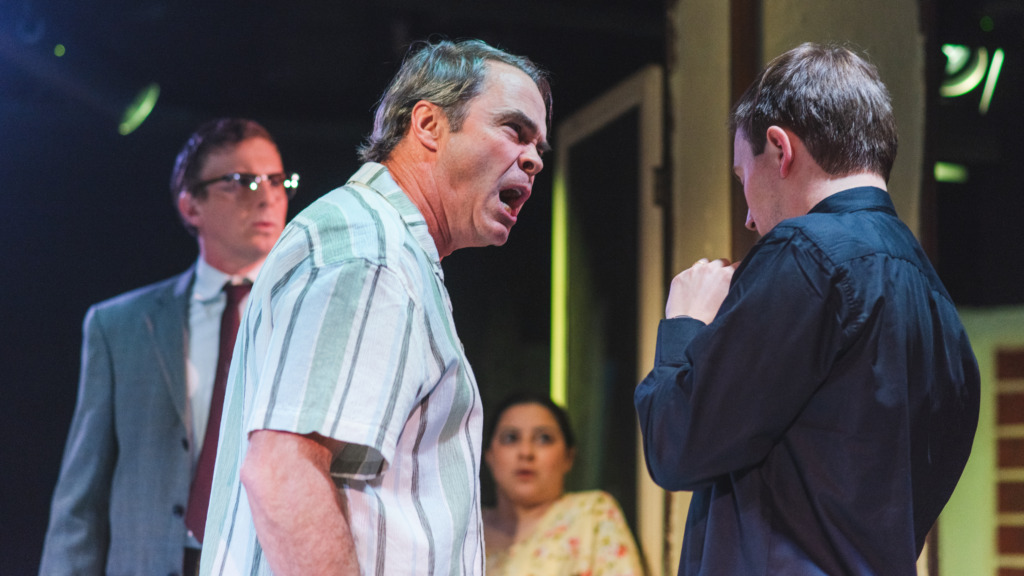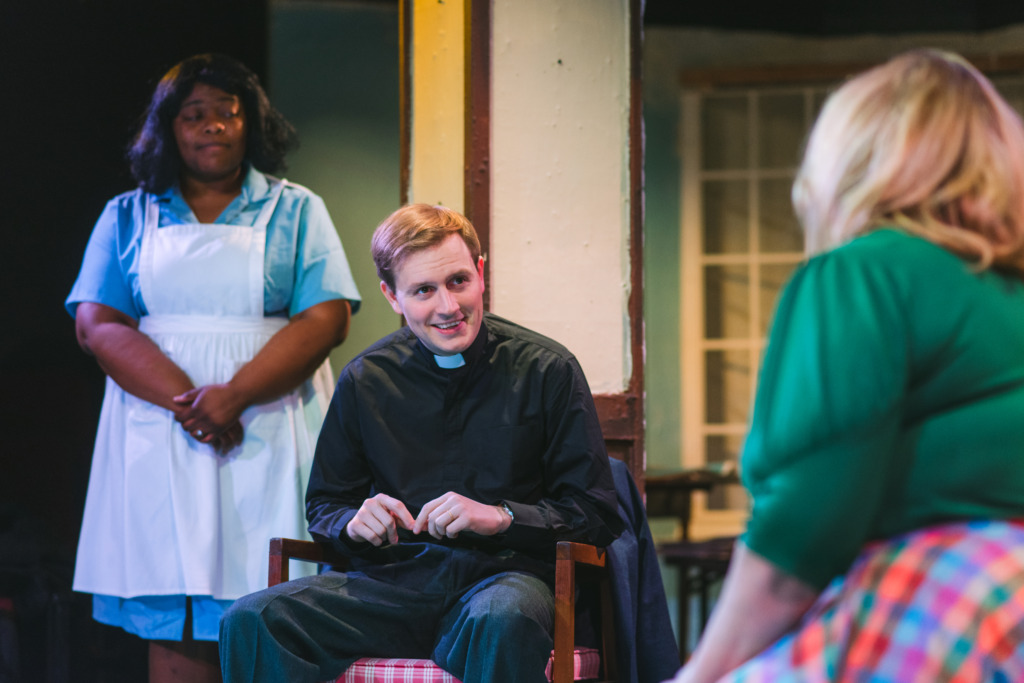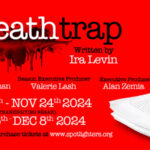author: Cybele Pomeroy
Clybourne Park, running at Spotlighters through March 30th, 2025, shows us two days, (two hours, really) separated by 50 years, in the life of one living room in a suburb undergoing change. It is a ‘good’ neighborhood, experiences decline and is now on the cusp of gentrification. It begins in the home just purchased by the Younger family of Raisin In The Sun, and Act I is the very same Moving Day in the home Lena Younger has just purchased, in a new neighborhood, as the Moving Day that closes A Raisin In The Sun. Chances are, readers, that you’ve spent time in some iteration of a Clybourne Park -type neighborhood, one that began looking one way with a single homogenous population, transitioned into something more inclusive over time, became rundown, shabby or unsafe, then began the alarming process of ‘re-imagining itself,’ often at the expense of residents rapidly priced out of their own neighborhoods. This show, however, isn’t about houses, neighborhoods or red-lining. It’s about racism.

Baltimore doesn’t need to look far to find egg on its own face in this regard. Cherry Hill was constructed after WWII as public housing for Negro veterans and their families, deliberately situated in an area undesirable to white folks. Though it is no longer technically legal to designate Cherry Hill- or any neighborhood- as specifically for one ethnic group, Baltimore passed, in 1910, Ordinance 610, which prevented Black residents from moving onto a block that was occupied by more than 50% white people, and vice versa. It was the first of 3 race-based legal ordinances in Baltimore, which were the model for similar ordinances in other US cities. Ordinance 610, and similar, non-legislative ‘Covenants’ (homeowner agreements to not sell to African Americans), remained on record even after courts later ruled them ‘unenforceable.’
Clybourne Park, by Bruce Norris, is set in the home that Lena Younger and her family are about to move into at the end of A Raisin In The Sun. The family who has sold it is working on moving out of the house, but not comfortably. The script is well written, and the dialogue sounds simultaneously exactly how people talk and outrageously over-educated. The story of Russ and Bev, who are leaving the house, is told piece-meal, while additional characters in the community who believe themselves to have a legitimate vested interest in the outcome of the afternoon interfere with Russ and Bev’s activities of the day. The overlapping, realistic dialogue is reminiscent of Edward Albee’s work, in that it is easy to hear and understand, but emotionally difficult to listen to or enjoy. There are, however, moments of humor, lest you fear that the piece is unrelentingly heavy. It’s not, and it moves quickly, so at the end of Act I you take a breath of air, maybe have a glass of wine, and dive back in for Act II.

Author Bruce Norris is not himself a member of the African American community. He doesn’t claim to speak on behalf of the Black community but does seem to have a comprehensive awareness of many forms of racism, marginalization and micro-aggression. The show is chock full of them. The script is enormously clever, perhaps almost too cute. The structural parallelism is possibly overdone, the playwright doesn’t give much depth to any of the characters, and they play more as archetypes than people. The humanity that inhabits them is given to them by the excellent actors, each of whom assumes at least two roles, one in Act I and a different one in Act II. Three of the seven actors make their Spotlighters debut in Clybourne Park. Each of the cast members is highly watchable, with impeccable timing. It’s a fascinating performance with a lot of surprises. Director Jen Sizer makes some bold choices and they pay off. Production values are quite high, as one expects at Spotlighters. Sound cues go off without a hitch, lighting is illuminatory, and the set works extremely well. (Credit to Director Jen Sizer for lighting, sound, and set design.)

The historic Audrey Herman Spotlighters Theatre, now in its 62nd season, is not known for producing softball shows. While Spots may stop short of ‘experimental’ theater, it would be a grave mistake to describe Spots shows as ‘safe.’ Many of the recent offerings at Spotlighters have tackled Big Issues, such as peer pressure, eating disorders and sexual assault in The Wolves, aging, dementia and death in Pilar Rabbit, poverty and mental illness in The Effect of Gamma Rays…. Marigolds and have called upon audiences to question their own prejudices, habits and basic assumptions about the workings of humanity. Clybourne Park does some of this, but what it does best is bring to the stage an entire lapful of uncomfortable conversations that highlight all the progress we have not made as a society. Watch in Act II for the character who cannot speak without being interrupted, the microaggression in Act I of “You have a car?” and the enormous disconnect of one character between abstract belief and personal interaction.
Running Time: 2 hours and 15 minutes with one intermission
Clybourne Park plays through March 30th 2025 at The Audrey Herman Spotlighters Theatre— 817 Saint Paul Street, Baltimore MD. For tickets call the box office at (410) 752-1225 or purchase them online.





